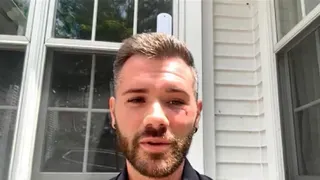November 15, 2014
What's Covered, What's Not in Health Overhaul
Kilian Melloy READ TIME: 2 MIN.
As the federal government and states launch a second round of enrollment under the health care law, consumers should be aware of what's covered and what's not when buying health coverage through insurance marketplaces. Plans cover essential health benefits, pre-existing conditions and preventive care, but dental and vision benefits vary.
Here are some questions and answers about individual coverage:
Q: How do I choose the right plan?
A: Just like last year, there are five categories or metal levels of coverage including bronze, silver, gold, platinum and catastrophic. Plans in each category pay different amounts of the total costs of an average person's care. For a silver plan, your health plan will pay an average of 70 percent, you pay about 30 percent.
If you expect a lot of doctor visits or need regular prescriptions, you may want a gold or platinum plan that have higher monthly premiums but pay more of your costs when you need care.
If you don't expect to use a lot of medical services, you may want a silver, bronze, or catastrophic plan that cost you less per month, but pay less of your costs when you need care.
Catastrophic coverage is available only to people who are under 30 years old or have a hardship exemption.
Q: Is vision coverage available?
A: Health plans don't have to include adult vision coverage, only pediatric vision coverage. If your plan doesn't include adult vision coverage, you can buy stand-alone plans for an additional cost outside the exchange.
Insurers who provide stand-alone vision plans say it's unfair to keep them out of the exchanges because they are paying millions of dollars in additional taxes to support the health overhaul. Attempts to address the issue in Congress have proved futile, as did a recent attempt in the California Legislature.
VSP, the nation's largest vision care company with 60 million members, had to pay $25 million by Sept. 30 in new federal taxes even though the company is not allowed to sell directly in most states.
"Everyone agrees that stand-alone vision plans should be included," said Rob Lynch, chief executive of VSP, which is based in the Sacramento suburb of Rancho Cordova. "Everybody points to somebody else as being the responsible party to make that happen."
Q: Is dental coverage available?
A: Health plans don't have to include adult dental coverage, only pediatric dental coverage. If your plan doesn't include adult dental, you can buy stand-alone family dental plans for an additional cost through their state exchange. Some consumers may be drawn to family dental plans if a dentist they prefer is not a provider in their health plan.
Q: I have health insurance through work. Can I check out the exchange to see if that insurance would be better or cheaper?
A: The exchanges are for people who don't have access to affordable coverage at work. If you lose your job and your health insurance, you can apply for coverage through HealthCare.gov or your state exchange at any time of the year. You'd be eligible for what's called a "special enrollment period" available to people who experience certain life changes. Coverage through the exchanges is likely to be more affordable than continuing your employer's plan under COBRA.
Kilian Melloy serves as EDGE Media Network's Associate Arts Editor and Staff Contributor. His professional memberships include the National Lesbian & Gay Journalists Association, the Boston Online Film Critics Association, The Gay and Lesbian Entertainment Critics Association, and the Boston Theater Critics Association's Elliot Norton Awards Committee.






